|  |  |  |
|
|
|
|
| Uruguay has a south Atlantic Ocean coastline and lies between Argentina to the west and Brazil to the north. |
|
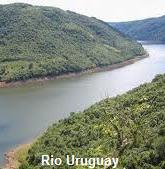 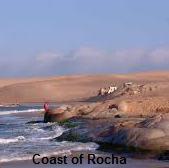 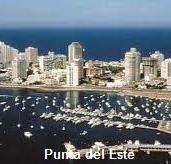 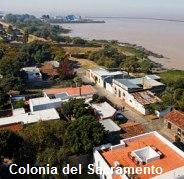 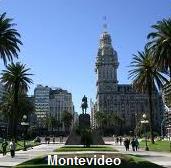 |
|
Uruguay is the second smallest country in South America and is a relatively flat country that is dominated by the South American Pampa, which serves as grazing country for cows and ship. Only on the central mesa is the flatland interrupted by chains of hills, which only reach a maximum altitude of 514 meters (Cerro Catedral). The longest river in the country is the Rio Uruguay with a length of 1,790 kilometers (1,106 miles), which flows from the Rio de la Plata, together with the Rio Parana from Argentina.
The total population of Uruguay is 3.4 million, almost entirely of Spanish and Italian ancestry. As something unique in South America most people are middle-class, there are not the extremes of wealth and poverty that plague much of the rest of the South American continent. As a result, the nation enjoys a relatively high standard of living and literacy.
|
|
|
|
The biggest city in Uruguay is the capital Montevideo, with a population of about 1.5 million. It is the only major city in the country and home to almost half of Uruguay's entire population. In order to gain an overall impression of the city, a visit to the Cerro hills is a must. The Solis Theater, National Museum for History and the Fine Arts and the wonderful and popular beaches Playas, Ramirez, Malvin and Pocitos are also worth a visit. Dominating the Montevideo skyline is one of South America's tallest skyscrapers, Palacio Salvo.
The tourist development in Uruguay has permitted a very good offer of hotels and accommodation. A beautiful place, that is also often visited by locals in the summer, is the Punta del Este, located about 140 kilometers east of Montevideo on the Atlantic coast and has about 40 kilometers of long fine sand beaches, the peninsula of Punta del Este is one of the most exclusive resorts in South America. Besides La Paloma and La Pedrera are two wonderful oceanic resorts on the coast of Rocha.
The climate in the pampa lowlands is subtropical in the north and temperate in the south and is similar to the climate in Southern Europe, only the warmest months are between January and March and the coldest between June and August, when temperatures fall to a few degrees above freezing point. |
|
|
|
|
|
|
Map of South America |
|
 |
|
| | |
|










